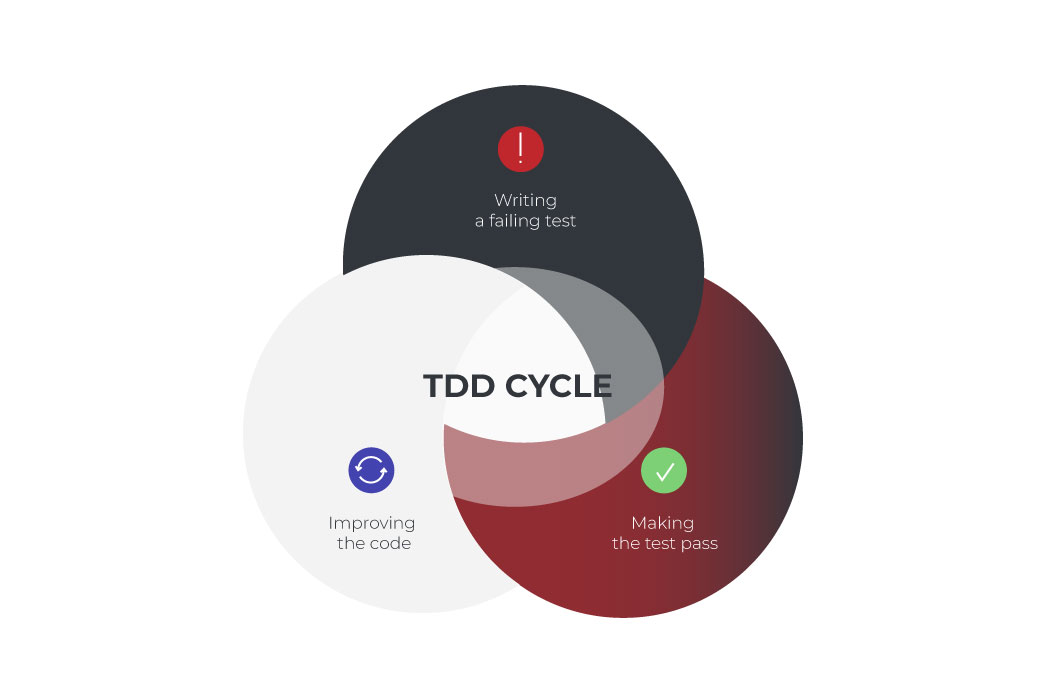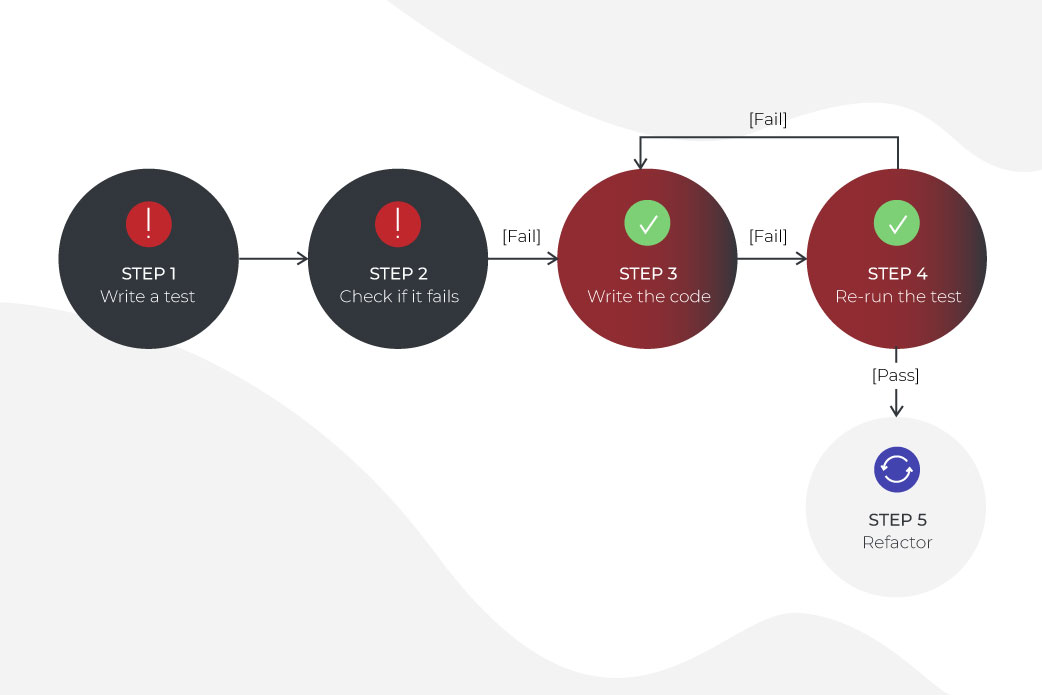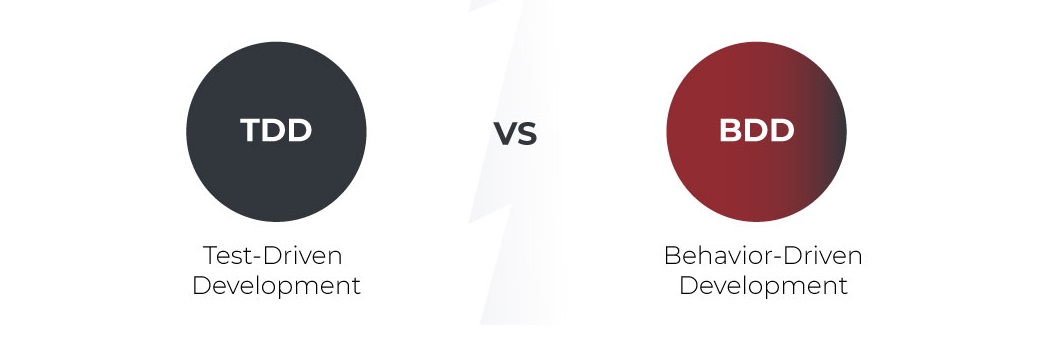What Strategies Work Best For Adopting Test-Driven Development

The Story On Fast Track: Web development has been greatly affected by test-driven development (TDD) since its invention in the middle of the 20th century. Kent Beck, the mastermind of Extreme Programming and the author of the book ‘Test Driven Development: By Example’ released in 2002, reinvented TDD techniques and expanded the meaning of test-driven development.
What Is Test-Driven Development In Software Engineering
Answering the question ‘What is TDD?’, we should start with highlighting the popularity of the idea of test-first development.
Test-first development as the concept prioritizing the importance of unit testing became so widely implemented in software engineering that people referred to it as test-driven design once they realized how it can impact the design of the code.
Indeed, test-driven development ideally builds in the software development life cycle, and when developers use TDD to their advantage, they experience a mindset shift that inspires and helps create a smooth workflow.
TDD vs. Traditional Approach
According to a Janzen and Saiedian survey conducted in 2008, in comparison with the traditional approach, TDD implying the creation of smaller modules enables developers to achieve less complexity in development and increase the ease of code maintainability.

Primarily, taking a test-driven development approach means that development is conducted entirely through tests, one test at a time, and active usage of refactoring, which now takes less time.
In other words, the initial implementation of the working code is usually intentionally simplified while the final code design is based on the emergence of new tests and obtained consistently on running tests and refactoring codes.
Hence, it is also referred to as red-green-refactor technique where red stands for writing a test, and green denotes creating a code that will pass the test that is followed by another ‘green’ phase of refactoring the working code.
Benefits Of Automation Testing
The automated unit test acts as a specification that helps to create a working code. Thus, it is both documentation and proof that the code works the way this documentation requires. In this context, being able to test a code is a big plus for developers and teams, and here’s why:
Automated unit tests empower coders with a feeling of certainty.
It helps get a ‘visualization’ of details before the implementation, catch unclear points at an early stage, isolate the code, and build a beautifully layered architecture easily.
Accumulating relevant tests is an important part of updating documentation that helps new team members adapt faster.
When implemented on an ongoing basis, TDD lets reduce the number of bugs in code significantly and, thus, contributes to quality assurance and production of a cleaner code.
Regression testing is a very time consuming process. In case of introducing automated unit tests, teams can build a suite of repeatable regression tests, reduce regression testing and achieve a new level of optimization in project management.
Evidently, following test-code-refactor rules results in better project budgeting: bugs are caught earlier in the code, and the earlier the bug is caught, the cheaper it is to fix.
Bottom Line: Proponents of TDD find this practice both liberating and making a positive impact on their productivity.
Steps To Adopt TDD
The emergence of TDD techniques roots in the wide implementation of Agile methodology of software development with its concept of rapid adoption to changes.
While the traditional coding process starts with the actual coding followed by testing, test-driven technique implies that a developer takes a ‘reverse’ approach, which means:
starting with writing a test
checking it.
In the process, developers take the following five steps:
TDD begins with writing a test for each new feature. To accomplish this, the programmer will need to examine user stories and use cases to learn the purpose of the new code they are writing.
Since there is no actual working code yet, after the developer writes the test and runs it, the test will fail, proving that the automated test-based framework works correctly and preventing the possibility that the new test will always succeed.
At this stage, developers know that a feature works as designed, and they focus on writing the code that passes the test: the code might not pass the test perfectly, but that is not mandatory since the developer isn’t expected to write code outside the functionality, which the test was aimed at.
With a feature that matches an approved design, now whenever they release a new code, programmers can use a test management tool to re-run that test. It gives them assurance that their most recent update has not broken the earlier designed feature. With TDD, they are ready to refactor the code.
The refactoring stage implies that as the code base grows, it needs to be routinely cleaned out. At this stage the focus shifts to improving quality while maintaining the essential code characteristics. Additionally, developers can remove duplicates and add new capabilities while refactoring a code in order to produce more manageable segments. By eliminating duplicates and enriching the functionality with the new features, the software design achieves a considerable improvement of efficiency.

Every round of TDD is repeated automatically to ensure that all the features are covered.
Bottom Line: To make sure that tests pass, a developer writes a unit test code, and after the initial fail, there comes a stage of running the various tests followed by refactoring the code and making it efficient. As a result, TDD can be used to add new features and refactor or upgrade the design without fear of doubt. The implementation of these steps also reduces debugging time by enabling developers to spend less time on identifying the causes of errors.
However, although the steps to adopt TDD and create a flow of automation testing seem easy to follow, there are some mistakes and challenges that developers should be aware of, and that we discuss below.
Mistakes You Need To Avoid In TDD
One of the mistakes in adopting TDD was pointed out as ‘fanatical TDD experience’ that results in overcomplicating the development and slowing it down rather than bringing the desired level of automation.
Indeed, developers often go to the extreme and start to pay too much attention to generating tests, which makes no sense from the practical or financial point of view. In doing so, developers are adding more and more tests to the system that leads to making it too complex and costly.
Also, developers might start with a set of unit tests for a new class prior to writing the class itself. Consequently, they spend considerable time making these tests work. It creates the overload when developers have to debug the working code and the tests, and any change in structure forces them to engage in tedious and time consuming code-rewriting tasks.
In practicality, it leads to misuse of TDD.
How To Avoid The Mistakes In TDD
Luckily, this kind of mistake is easy to avoid. With TDD, a developer should minimize the size of the ‘work context’. This applies to both the test and the working code. Hence, the recommended strategy breaks down to taking an itemized approach and writing a short test followed by writing a small piece of working code.

Shortening the gaps between runs of tests appears a solution as it allows you to check the written code instantly without losing the overview, that is, capturing all the details of the code that was changed.
Some developers get frustrated with the occasional drop of speed associated with taking the TDD approach and write code without tests. But with practice, the process starts moving faster, and it increases developers’ confidence. Ideally, to avoid mistakes in adopting TDD at the initial stage of implementation, developers are not to be limited by tight deadlines.
The fact that there can be a drop in speed must not be a discouragement. Once developers have mastered advanced testing techniques, they will not only get back their speed but increase it multifold, and tools we list below can be helpful for accelerating the TDD adoption.
Tools Used For Adopting The TDD
When you hear people blaming TDD for slowing down the development, it’s because they don’t realize that TDD is just a method, not the end goal. As with all powerful techniques, test driven development is easy to learn but when used improperly, it can do a lot of damage. To ensure the proper implementation, there are lots of assisting tools.
In particular, unit testing frameworks and tools that support TDD approach include the following:
csUnit is an open source unit testing tool that is commonly used for .Net projects
PHPUnit is used for PHP projects
DocTest and PyUnit are easy-to-learn, simple unit testing frameworks for Python
JUnit is a TDD framework for Java
TestNG is a Java testing framework (and a worthy alternative for JUnit)
RSpec, an open-source Ruby testing framework, is available for Ruby projects
Mockito, a Java testing framework, is used for JRE projects.
Implementing automated testing with these tools in TDD leads to the creation of code that is more modular, flexible, and manageable.
TDD for Agile teams
TDD presenting test automation best practices in Agile brings a breakthrough when it comes to the increase of project profitability as well as overall business productivity gain.
What benefits Agile teams get
Aside from a benefit of accelerating the velocity of the iterations, Agile teams taking a proactive approach in implementing test-code-refactor activities can enjoy deploying a new feature into production with a sense of confidence.
TDD results in perfected code quality reflected in improving measurements of coupling and minimizing the mistakes in work with global, session and module variables while moving the development of design from test to production faster.
TDD-based approach also helps to establish efficient communication among Agile team members with regard to their roles as business analysts, developers, testers, managers, etc.
Overall, teams practicing the TDD approach note that the considerable increase of productivity comes from the immediate observation of failures at early stages of project performance.

TDD vs BDD
BDD Methodology
BDD methodology standing for behavior-driven development is often presented in opposition to the TDD approach. Below, we note facts worthy of consideration when choosing a strategy that is more fitting for your project.
Initially, the introduced approach implies creating certain behavioral specifications that describe the behavior of the designed software written in a language which is not code but precise standard English.
It means that behavior-driven development includes writing a scenario based on the expected behavior of the design in the form visible to the end user.
In practice, BDD implementation supposes writing acceptance tests (ATs) prior to unit tests.
In fact, BDD appeared as an extension rather than an alternative to the TDD approach.
TDD and BDD Differences
However similar TDD and BDD may seem in essence, these two approaches are intended for different purposes and the tools that can be used to implement them also differ much.

For a start, in TDD, tests are instantly implemented in the code while in BDD, the steps are most often described in a language that everyone understands, not just the developers.
TDD is good for unit testing, i.e. for testing individual modules while BDD is more preferable for e2e testing (i.e., checking the whole system) and for integration testing (i.e. checking how individual modules work together).
It also should be noted that unit tests in TDD are written by developers individually while BDD may require a joint effort of all the team members.
In a nutshell, TDD is intended as the technique for checking functions while the primary focus in BDD is checking of user scenarios.
10 CHALLENGES IN MOBILE APPLICATION TESTING
Conclusion
While a traditional sequence dictates that the design is first produced and then tested, the test-driven development methodology offers a different sequence proving to bring high quality results with a guarantee because unit testing prior to writing a working code ensures the prevention of coding failure and, thus, secures a role in the future of software testing.
When teams take a test-driven development approach they focus on building a system incrementally that translates into creating functional and deliverable end results.
Therefore, the major advantage of test-code-refactor strategy is achievement of flow in development by enabling the developer to increase the structure of code without affecting its functionality.
Build your ideal
software today


